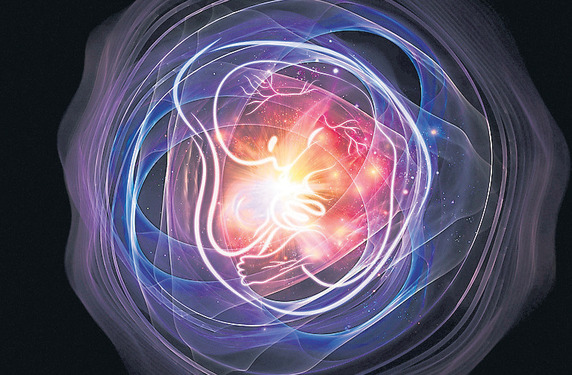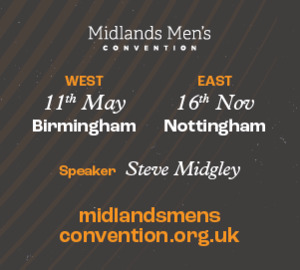Personhood and the embryo
Dr Calum MacKellar reflects on the image of God in human beings
Dr Calum Mackellar

Discussions concerning biomedical developments relating to the human embryo never really leave headline news.
Even recently, new debates have arisen concerning the possibility of lifting the 14-day limit during which it is possible to undertaken destructive embryonic research in the UK. This is because scientists are now able to grow embryos beyond such a limit and some are proposing that doing so may be in the interest of biomedical research. But this would then mean reevaluating, yet again, the moral status of early human embryos as if it was something that changed over the years.
In other words, because of new utilitarian demands, the ‘special moral status’ of the human embryo is continually coming under pressure to be reconsidered and questioned.
Changing positions
For example, in 1984, Lady Mary Warnock (one of the main architects of the UK embryology legislation) commented, in her report that led to the UK Human Fertilisation and Embryology Act of 1990, that the embryo ‘ought to have a special status’ under UK law1. But in December 2002, her position had changed significantly indicating instead: ‘I regret that in the original report that led up to the 1990 legislation we used words such as ‘respect for the embryo’ … I think that what we meant by the rather foolish expression ‘respect’ was that the early embryo should never be used frivolously for research purposes’2.
Adding: ‘you cannot respectfully pour something down the sink – which is the fate of the embryo after it has been used for research, or if is not going to be used for research or for anything else’3.
No longer special status
This example demonstrates how an entity, which was understood as having a special status in the 1980s, is no longer considered to have such a status and, in fact, is seen to have completely lost all moral status. From this perspective, it is apparently only the bio-medical research (and not the embryo) that should now be respected in the UK.
This example demonstrates that there is a real need for clear understanding of what gives entirely human, and partially human, embryos moral status. Moreover, from a Christian perspective, this would mean seeking to understand whether they may reflect the image of God and thus be considered as persons.
Theologians avoid issue?
In this regard, Brendan McCarthy, the Church of England ethicist, indicates: ‘This concept of the dignity and status of humans being fundamentally determined by the image of God is an important one in our attempt to evaluate the human embryo. If it can be demonstrated that the image is to be found in the human embryo, then any destruction of it or experimentation on it ought to be opposed.’4
Interestingly, however, this approach has not, as yet, been developed to any significant extent and there is still a great need to study how the image of God can be reflected in a very small human being who does not have a brain or even any developed organs.
The topic of the moral status of the human embryo, moreover, will inevitably be sensitive and controversial. Indeed, this may be one of the reasons why it has been somewhat put aside or even avoided, including amongst the Christian theological community. It may even be suggested that, because of the discomfort associated with any appropriate discussions relating to the moral status of embryos, this subject matter may have become somewhat taboo, including in local church situations, and may only seldom be addressed.
Deprived of guidance
This may have happened in order to show appropriate compassion and sensitivity towards those affected by the very difficult experiences of infertility, miscarriage and abortion, with all the significant suffering generally associated with such occurrences.
But this may also mean that many parishioners are being singularly deprived of any guidance about how to consider and regard the human embryo. A situation which may have been compounded by pastors, themselves, feeling (1) often unqualified from a theological and scientific perspective to address such a subject or (2) unprepared to speak to their congregations on a deeply moral issue, out of an understandable fear of causing deep upset to, or even alienating, some church members.
But regrettably this silence may, at the same time, have led many Christians to resemble the Israelites in the time of the Judges where ‘everyone did as they saw fit’ (Judges 17.6). The American theologian and bioethicist, John Kilner, indicates that the silence and inaction of most churches in this arena is distressing5.
Thus there was a real need for a thoughtful new study to be presented, based on serious theological analysis and the very rich arguments from different Christian denominations on the concept of the image of God in the embryo – material that could be used by all the different stakeholders in helping this important conversation to move forward in a constructive manner while being informed by the latest scientific results.
Better defined
It was, therefore, in this context that the Image of God, new book entitled The Personhood and the Embryo 6was written.
In this study, it was first recognised that the image of God can only be better defined but never completely understood since it reflects something of God. From this perspective, however, it is still possible to examine prevalent arguments about how the image of God may be reflected in persons including:
(1) Substantive aspects – the way the image of God may be reflected in Homo Sapiens from the standpoint of physical human nature or substance;
(2) Functional aspects – the capacity of human beings to do or be something specific; and
(3) Relational aspects – the way these enable loving relationships to exist giving value and meaning.
Each time, the topic of the image of God, the associated notion of personhood and how both these concepts can be applied to the arguments concerning the moral status of the embryo, were considered. But this eventually showed that these three common perspectives may be insufficient, on their own, to adequately discuss whether the image of God can be recognised in human embryos.
To address this problem, it was important to investigate two relatively new angles:
(1)The creation of humankind by God; and
(2) The incarnation of the Word of God; and how both could better inform the image of God and personhood. As such, it was shown that these could be far more useful and relevant when seeking to discuss and understand the true value and worth of human embryos.
Beyond science
Of course, it will never be possible to scientifically prove that the image of God is reflected in the human embryo. Indeed, it is only because of the Christian faith in God that a belief in the image of God in persons is possible, which then enables a belief in the image of God in embryonic persons.
Moreover, because this image reflects the mystery of God, it will always remain a mystery. But this does not mean that deliberately destroying an embryo with this mysterious image of God is no unimportant matter. This is because, as Kilner explains: ‘Destroying someone in God’s image, in light of God’s connection with humanity, is tantamount to attacking God personally.’7
In addition, if human embryos may be considered to reflect the image of God and they are deliberately being destroyed by society, then this may be just another front in the war against God and his creation. But it is also a front in which Christians should engage, with God’s help, love, compassion and wisdom.
Industrial destruction
This implies that the Christian church should be profoundly challenged by the millions of human embryos which are being destroyed in countries such as the UK and the USA without the expression of any significant protest or compassion. As the member of the UK House of Lords, Lord Alton, indicated in 2012, the destruction of human embryos, human persons made in the image of God, has reached an ‘industrial’ scale in ‘casual indifference’8.
In this regard, it should be remembered that one of the moral measures of a Christian church is how it considers the smallest, weakest and most helpless individuals with the most vulnerable claims of per-sonhood reflecting the image of God.
Dr Calum MacKellar, is a Visiting Lecturer in Bioethics at St Mary’s University in London, UK, and a Fellow with the Center for Bioethics and Human Dignity at Trinity International University in Chicago, USA. He is also author of The Image of God, Personhood and the Embryo published by SCM Press, London, in 2017.
Footnotes
[1] Report of the Committee of Inquiry into Human Fertilisation and Embryology, London: Her Majesty’s Stationery Office, 1984, p. 63.
[2] House of Lords Hansard, Volume 641 Part 14, Column 1327, 5 December 2002.
[3] House of Lords Hansard, Volume 641 Part 14, Column 1327, 5 December 2002.
[4] Brendan McCarthy, 1997, Fertility & Faith, Leicester: Inter-Varsity Press, pp. 126-127.
[5] John F. Kilner, 2015, Dignity and Destiny: Humanity in the Image of God, Grand Rapids: Eerdmans, p. 327.
[6] Calum MacKellar, The Image of God, Personhood and the Embryo, 2017, London: SCM Press.
[7] John F. Kilner, 2015, Dignity and Destiny: Humanity in the Image of God, Grand Rapids: Eerdmans, p. 319.
[8] Andrew Hough, ‘1.7 million human embryos created for IVF thrown away’, The Telegraph, 31 December 2012,


